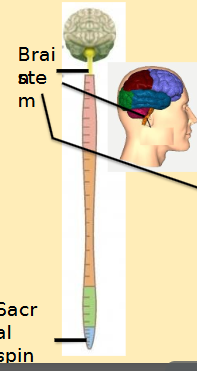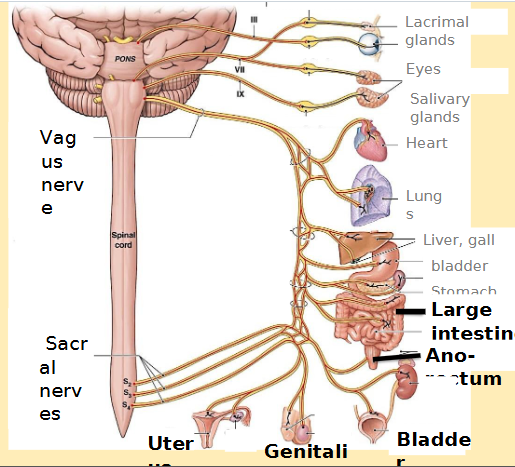ANS: Parasympathetic nervous system
1/13
There's no tags or description
Looks like no tags are added yet.
Name | Mastery | Learn | Test | Matching | Spaced |
|---|
No study sessions yet.
14 Terms
Where is the parasympathetic ganglion located relative to the target organ?
Very close to the target organ.

What are the main muscarinic receptor subtypes in the parasympathetic system?
M1, M2, and M3.
What are some effects of muscarinic receptor activation in the parasympathetic system?
Slows heart rate
Contracts bladder and GI tract
Increases saliva secretion
From where do parasympathetic nerves arise?
Brainstem
Sacral spinal cord

Which cranial nerves carry parasympathetic fibers?
CN III (Oculomotor), CN VII (Facial), CN IX (Glossopharyngeal), CN X (Vagus).
What are some target organs of parasympathetic cranial nerves?
Eyes (constrict pupils)
Salivary and tear glands (increase secretions)
Heart (slow heart rate)
GI tract (increase contractions)
What body areas do sacral parasympathetic nerves target?
Bladder (micturition)
Lower GI tract (defecation)
Uterus
Genitalia

What is the role of the vagus nerve in the parasympathetic system?
It innervates thoracic and abdominal organs, slowing heart rate and increasing GI activity.
What is the key neurotransmitter in the parasympathetic nervous system?
Acetylcholine (ACh).
What receptors are activated by acetylcholine in the parasympathetic system?
Nicotinic and muscarinic receptors.
What is the function of the parasympathetic nervous system?
"Rest-and-digest" – slows heart rate, increases digestion, and promotes glandular secretions.
What happens when muscarinic receptors are activated in the heart?
Heart rate slows down.
How does the parasympathetic system affect the GI tract?
Increases contractions and promotes digestion.
How do we tell the difference between NT and hormones?
Mode of transport- NT via nerves and AP etc. Hormones via blood (slower acting).